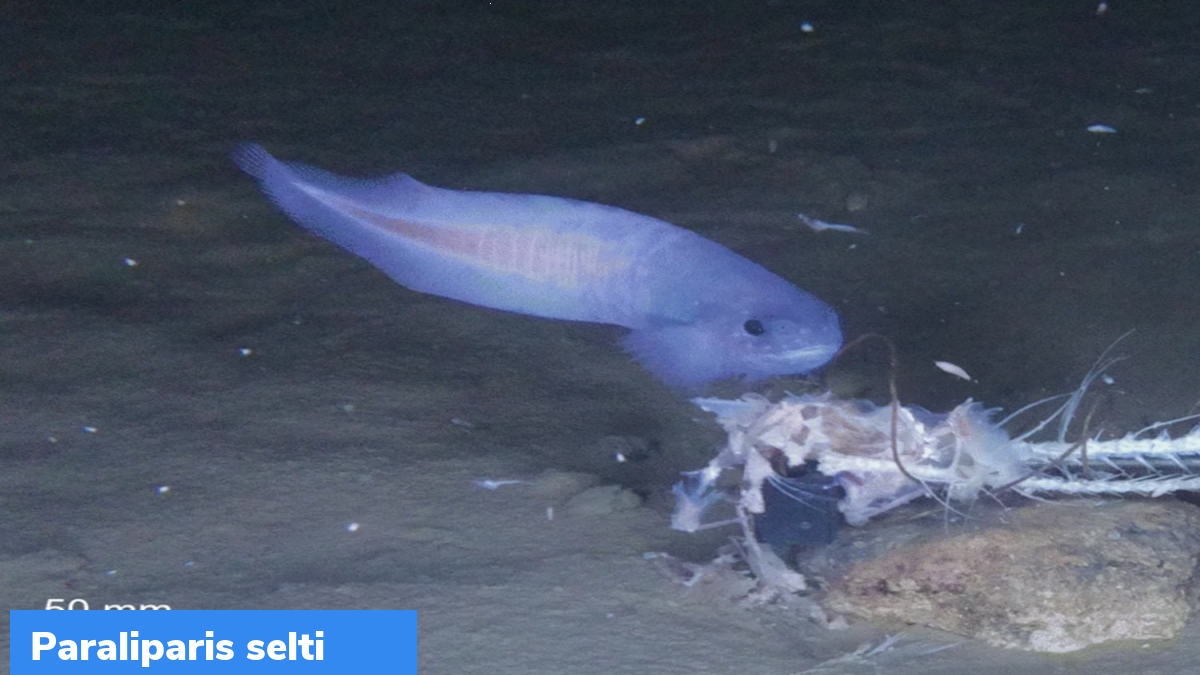Paraliparis selti – new species of deep sea fish
Scientists have recently discovered a new species of deep sea fish in the Atacama Trench.
Key facts
- In 2018, an international team of researchers surveyed the Atacama Trench by deployed free-falling landers to study deep sea creatures.
- They recorded three types of hadal snailfish, one of which is never known to science.
- The new species, christened Paraliparis selti, was discovered some 6,000 to 7,000 meters deep.
- With its large eyes and unique colour, it resembled snailfish living in shallower waters.
- Scientists used a 3D x-ray technique called microcomputed tomography (micro-CT) and DNA barcoding to identify the species and found that the new species is a separate colonizer of the Atacama Trench.
- It belongs to genus Paraliparis. Species of this genus is mainly found in Southern Ocean of the Antarctic and rarely found deeper than 2,000 meters.
- This is the first time that the Paraliparis genus was recorded in the hadal zone.
- The name Paraliparis selti means blue in the Kunza language of the indigenous people living in Atacama Desert.
- The new species has evolved from the cold-adapted species of the Southern Ocean.
- Its discovery opens new questions related to the connection between cold temperature and high pressure adaptation.
- It gives insights into how and when life went into the deep waters.
About Atacama Trench
The Atacama Trench or the Peru-Chile Trench is an oceanic trench in the eastern Pacific Ocean situated some 160 km off the coast of Peru and Chile. It reaches a maximum depth of 8,065 and is around 5,900 km long. It delineates the boundary between the subducting Nazca Plate and the overriding South American Plate. Subduction is the geological process that occurs when one tectonic plate shifts under another and is forced to sink because of high gravitational force into the mantle. Seamount ridges – Nazca Ridge and Juan Fernández Ridge – enter the subduction zone in the Atacama Trench.
Month: Current Affairs - October, 2022
Category: Environment Current Affairs • Places in News Current Affairs


